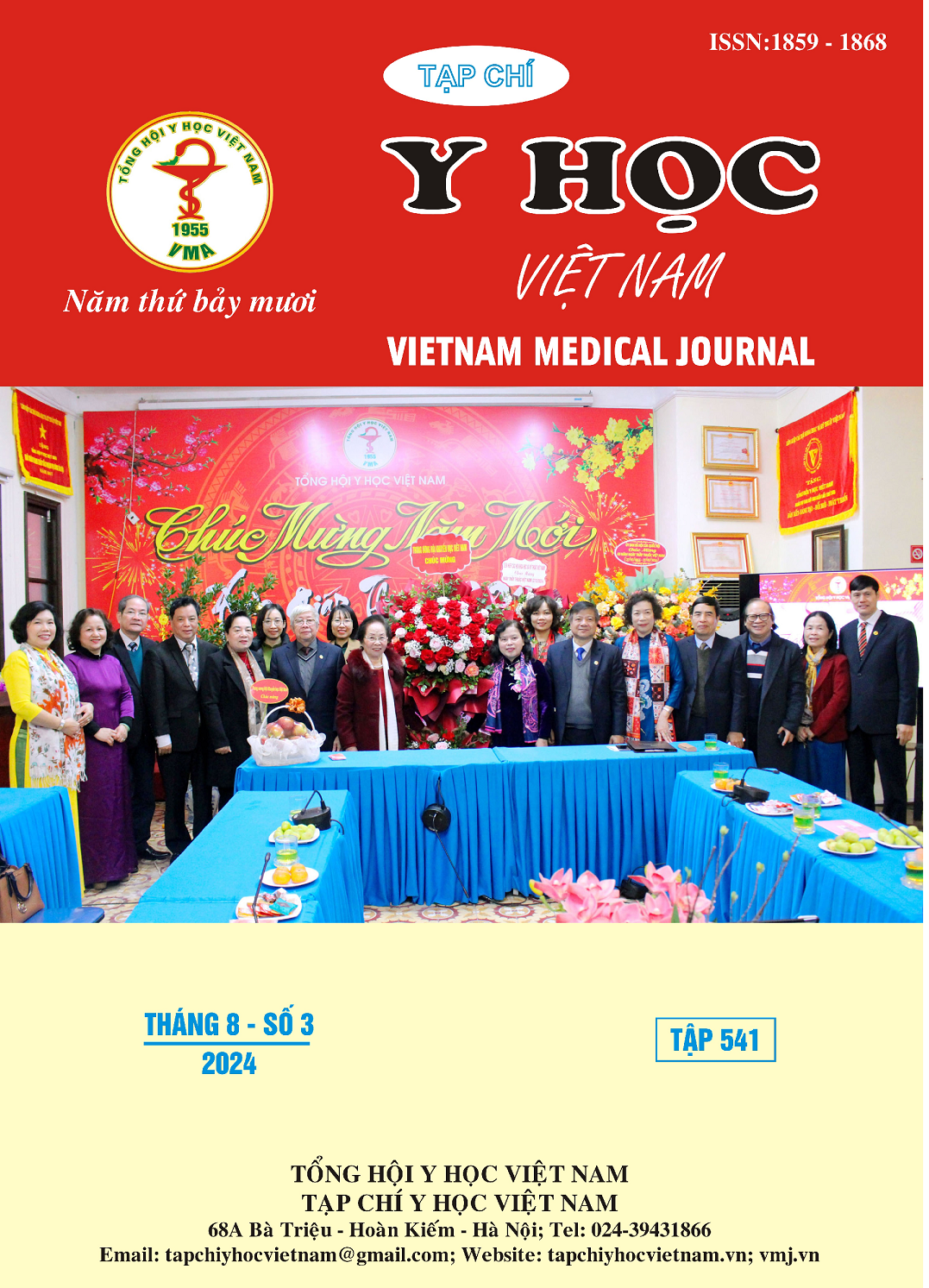APPLICATION OF METHODS TO ESTIMATE FETAL WEIGHT THROUGH CLINICAL AND ULTRASOUND ON FULL-TERM PREGNANCY AT CAN THO CENTRAL GENERAL HOSPITAL 2022-2024
Main Article Content
Abstract
Background: Estimating fetal weight (EFW) is important during pregnancy to predict labor. Objective: To investigate some factors affecting the accuracy of ultrasound in estimating fetal weight; research and apply methods to estimate fetal weight through clinical and ultrasound. Materials and methods: An analytical cross-sectional study includes 250 pregnants from 37 weeks to 42 weeks giving birth at Can Tho Central General Hospital. Results: 85,2% of cases were in accurate estimation group. In there, abnormal fetal weight, abnormal amniotic fluid and malpresentation were the factors affecting the accuracy of the ultrasound in fetal weight estimation. The correlation betwween clinical and the weight of a full-term pregnancy: symphysio-fundal height (SFH) y = 92,348xSFH + 243,466 with r = 0,455; abdominal girth (AG) y = 26,715xAG + 522,488 with r = 0,452 (p < 0,05). The correlation between ultrasound and the weight of a full-term pregnancy The method used to estimate the weight of fetal by doing ultrasound: Biparietal diameter (BPD) y = 58,252xBPD – 2212,401 with r = 0,566; head circumference (HC) y = 14,107xHC – 1491,33 with r = 0,509, femur length (FL) y = 69,464xFL – 1606,411 with r = 0,53, abdominal circumference (AC) y = 15,867xAC – 2195,855 with r = 0,746 (p < 0,05). After analysing multivariate linear regression, the best equation according to the most accurate and simple criteria: y = 13,634xAC + 41,869xFL – 4302,173 with r = 0,804 p < 0,05. Conclusion: abnormal fetal weight, abnormal amniotic fluid and malpresentation were the factors affecting the accuracy of the ultrasound in fetal weight estimation. There were a corelation between the clinical, ultrasound and estimating fetal weight of full-term births.
Article Details
Keywords
Estimated fetal weight, clinical, ultrasound, full-term pregnancy.
References
2. Lê Lam Hương. Nghiên cứu giá trị dự đoán trọng lượng thai của thai đủ tháng qua lâm sàng và siêu âm. Tạp chí Phụ Sản. 2024; 12(1):58-63.
3. Nguyễn Thị Minh Trang. Vai trò của siêu âm và lâm sàng trong ước lượng trọng lượng thai từ 37 đến 42 tuần. Trường Đại học Y Dược Thành phố Hồ Chí Minh. 2020. 85.
4. Blitz M.J., Rochelson B., Stork L.B., et al. Effect of maternal body mass index and amniotic fluid index on the accuracy of sonographic estimation of fetal weight in late gestation. Am J Perinatol. 2018; 35(13):1235-1240.
5. Dudley N.J. A systematic review of the ultrasound estimation of fetal weight. Ultrasound Obstet Gynecol. 2005; 25(1):80-89.
6. Hiwale S., Firtion C. Analysis of factors influencing accuracy of ultrasound-based fetal weight estimation. Indian J Radiol Imaging. 2020; 30(2):156-162
7. Karahanoglu E., Altinboga O., Akpinar F., et al. The Effect of the amniotic fluid index on the accuracy of ultrasonographic-estimated fetal weight. Ultrasound Q. 2017; 33(2):148-152.
8. Melamed N., Ben-Haroush A., Meizner I., et al. Accuracy of sonographic fetal weight estimation: a matter of presentation. Ultrasound Obstet Gynecol. 2011; 38(4):418-424.
9. Shmueli A., Aviram A., Bardin R., et al. Effect of fetal presentation on sonographic estimation of fetal weight according to different formulas. Int J Gynaecol Obstet. 2017; 137(3):234-240.
10. Stubert J., Peschel A., Bolz M., Glass Ä., Gerber B. Accuracy of immediate antepartum ultrasound estimated fetal weight and its impact on mode of delivery and outcome - a cohort analysis. BMC Pregnancy Childbirth. 2018; 18(1):118.


